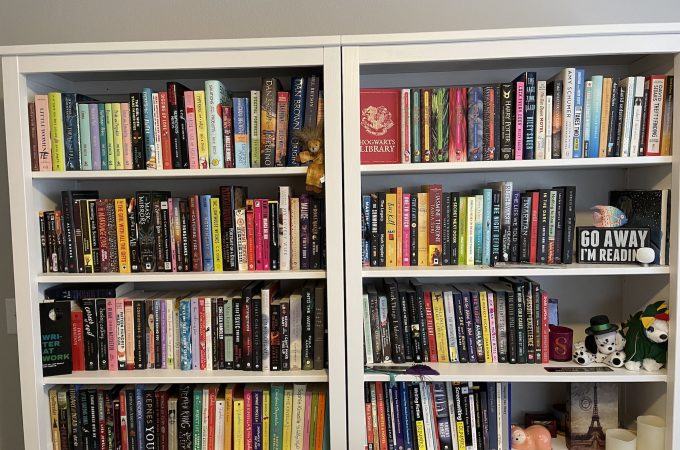
6 outlining methods for writing your novel
One problem I face when working on my writing is I have so many ideas for scenes and plot points and plot twists but then when I open my document I stare at it and all my ideas have vacated my mind.
I think a lot of writers feel the same way (ahem, writer’s block, ahem), which is why many turn to creating in-depth outlines of their work before they start so they have a roadmap of where they want to go with their story.
I’ve only recently become a plotter as I’ve been a panster for past projects but got tired of realizing at the end that I had so many scenes that would need to be changed or cut that I decided I wanted to start pre-planning my story instead of just seeing where I ended up.
If you’re starting to rely on outlines, these five are great starting points as some are high level and allow you the freedom and flexibility pantsing gives you and others help you drill down and really narrow down what scenes need to be in your novel and what can be recycled.
6 ways to plot and outline your novel

1. The Hero’s Journey
The most widely-used and well-known novel structure is the Hero’s Journey by Joseph Campbell. Star Wars, The Lord of the Rings, and The Lion King all use the Hero’s Journey to frame the story. It’s about adventure, fighting bad guys, making new friends, and becoming a true hero!
There are twelve steps to this classic plotting method, or twelve beats you need in your story to follow this formula.
- The ordinary world: Show the status quo of the hero’s day-to-day life and their “normal” life
- The call of adventure: The catalyst that starts the adventure or invitation to go on the journey
- Refusal of the call: The “thanks, but no thanks” from the hero who doesn’t want to go on this adventure nor do they want to disrupt their normal life
- Meeting the mentor: The hero is inexperienced and can’t do this journey alone so they meet their mentor who will guide them and prepare them for the adventure
- Crossing the threshold: The hero commits to go on the adventure and rescue the princess or learn how to be a Jedi
- Tests, allies, and enemies: It’s time to hit the hero with challenges and allow them to make friends and enemies, like Harry Potter befriending Ron and Hermoine while defeating a troll in the bathroom and Harry getting on the Quidditch team
- Approach to the inmost cave: The hero is getting closer to their goal. The cave can be physical, like the Death Star, or mental like the hero believing they’ll never amount to anything
- The ordeal: The big test for the hero which is generally where the hero hits rock bottom but gets a glimmer of hope
- Reward or seizing the sword: There’s light at the end of the tunnel for the hero and they have what they need to be successful, like Dorothy getting the ruby slippers and the Wicked Witch’s broomstick
- The road back: The hero must face the consequences of seizing the sword or facing a new battle
- Resurrection: The climax of the story where they go through a resurrection after going through the final battle or test
- Return with the elixir: The hero is triumphant and has won the prize (elixir) and they’re a changed person, which is the true prize
2. The “take off your pants” outline
This outlining method comes from Libbie Hawker’s book Take Off Your Pants! Outline Your Books for Faster, Better Writing. This outline has some of the same beats as other outlines but is a more barebones version if you want to change things up or just want a high-level look at your story’s plot points.
First things first! Before you use this outline, you must know:
- Main character
- External goal
- Main character’s flaw
- Antagonist
- Ally
- How will it end?
- Theme
Plot outline:
- Opening scene: Show the main character’s everyday reality
- Inciting event: What sets the story in motion
- Character realizes external goal: This may be done at the same time as the inciting event but needs to be a moment where the main character realizes their goal
- Display of flaw: Show the flaw in action
- Drive for goal: Show the character working toward their goal but the flaw is holding them back or ruining their plan
- Antagonist revealed: Introduce the antagonist and what their goal is and how they can impact the main character’s story
- Thwart #1: The main character is thwarted in achieving their goal
- Revisiting flaw: Character may show signs of realizing their flaw or wanting to fix it
- New drive for goal: Now they try to achieve their goal in a new way
- Antagonist attacks
- Thwart #2
- New drive for goal
- Antagonist attacks
- Thwart #3
- Changed goal
- Ally attacks: The ally helps the main character confront their flaw and go on the right path to achieving their goal
- Girding the loins: The main character knows what they have to do to confront the antagonist and win
- Battle: Fight against the antagonist
- Death: The death of the flaw or flawed character, they have what they need to win against the antagonist
- Outcome/resolution: The end
3. The high-level novel outline
This plot outline focuses more on big story questions and moments and makes you know why each act is important and what question the reader should be asking to keep them turning the pages of your book.
For this outline, you need to start with:
- Protagonist’s want (external desire)
- Protagonist’s need (internal desire/outcome)
- Theme
- Protagonist’s lie
- Protagonist’s truth
Now it’s time to outline your major themes and plot points. This structure uses the principle of three as each act has the same structure and same big questions you need to answer. This outline gives you a lot of freedom in what scenes or plot points will happen but provides some direction on where the story is going or its overall feeling.
Act I (the beginning)
- Inciting incident
- Complications
- Crisis (big question)
- Climax (protagonist’s choice)
- Resolution
Act II (the journey)
- Inciting incident
- Complications
- Crisis (big question)
- Climax (protagonist’s choice)
- Resolution
Act III (the end)
- Inciting incident
- Complications
- Crisis (big question)
- Climax (protagonist’s choice)
- Resolution
4. The 11-point outline
This outline is similar to the Hero’s Journey and the “take off your pants” outline in that it outlines the major beats or scenes you need to have in your timeline but also provides a lot of freedom with the scenes, especially the trials and tribulations section.
- The hook: Why would a reader pick up this book and be intrigued to read it? Think of this as the back cover description.
- The protagonist: Who are we following? And how closely (which POV)?
- The protagonist’s world: Is it fantasy or is it close to our own world?
- Why the protagonist is dissatisfied with their world: What will cause them to go on the journey and why should a reader become invested in their transformation?
- The inciting incident: What kicks off the story?
- The point of no return: What makes the protagonist commit 100% to the journey?
- Trials & Tribulations: How can you raise the stakes or make the journey one we want to see them succeed in?
- The midpoint: Is the protagonist on a successful trajectory or can a plot twist be introduced here?
- Acceptance & action: Because of what happened in the midpoint, how will the protagonist adapt and move forward in their quest?
- The climactic sequence: Up the tension and stakes toward the final battle
- The resolution: Show us who the protagonist has become because of their journey
5. The Save the Cat! outline
Save the Cat! is adapted from screenwriting but was fleshed out a bit by Jessica Brody for novelists. This plotting method is also similar to the Hero’s Journey but has 15 major beats instead of 12. I highly recommend getting a copy of her book if you want good examples of the 15 beats in action across a variety of genres.
Before plotting your story, you do need to start with your main character and give them:
- A problem (or a flaw they need to fix)
- A want (what’s their goal?)
- A need (theme or life lesson they need to learn)
Now, onto the beats:
- Opening image: Before shot of the hero in their normal, pre-journey life
- Theme stated: Character hints at the novel’s theme or what the protagonist must learn
- Setup: Show the hero’s regular life and uncover their flaws
- Catalyst: AKA the inciting incident that pushes the character into action or helps them discover the new world of their story
- Debate/Prep: If you’re going classic hero’s journey, the protagonist will try to get out of committing to whatever they’re supposed to do. If they know they have to take action, then this beat will be focused on their preparation to go on the journey
- Break into 2: Hero accepts the call to action and crosses the threshold
- B Story: Introduce your protagonist’s Ron and Hermoine, or side characters who will help the protagonist in their new world
- Fun & games: Show the hero succeeding or failing in their new world
- Midpoint: Character either has a false victory or false defeat
- Bad guys close in: This could be literal bad guys or the character’s flaws kicking into high gear to self-sabotage
- All is lost: Your protagonist has hit rock bottom
- Dark night of the soul: The character reacts to the all is lost beat and processes why it happened
- Break into 3: The protagonist has an aha! moment and learns what they need to do to be successful
- Finale: Protagonist has learned the theme and is ready for the climax/final battle
- Final image: A mirror shot of the opening image to show the protagonist’s transformation
6. Kaytastic’s 9 block outlining method
If you want to make sure your plot points are spaced out for pacing and have a general idea of what chapters your major scenes should be happening in, you might like the 9 block/27-chapter outline.
Watch her video here to see how she fills in the grid!
| Act I | Act II | Act III |
| Chapter 1 – Introductions | Chapter 10 – New world | Chapter 19 – Calm before the storm |
| Chapter 2 – Inciting incident | Chapter 11 – Fun and games | Chapter 20 – Plot twist! |
| Chapter 3 – Fall out | Chapter 12 – Old juxtaposition | Chapter 21 – Darkest moment |
| Chapter 4 – Reaction/rebel | Chapter 13 – Build up | Chapter 22 – Power within |
| Chapter 5 – Action | Chapter 14 – Midpoint | Chapter 23 – Action/rally |
| Chapter 6 – Consequence | Chapter 15 – Reversal | Chapter 24 – Converge |
| Chapter 7 – Pressure | Chapter 16 – Consequence | Chapter 25 – Battle |
| Chapter 8 – Plot twist! | Chapter 17 – Trials | Chapter 26 – Climax |
| Chapter 9 – Push | Chapter 18 – Dedication | Chapter 27 – Resolution |
What’s your favorite novel outlining method? Tell me in the comments below or on Twitter!




